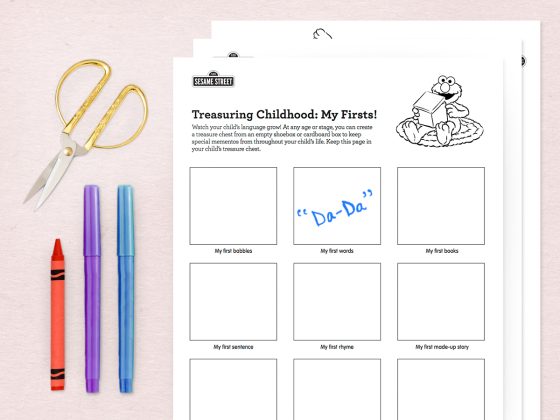
Treasuring Childhood
Help parents notice and appreciate moments with their children.
- Tell families that from day one, everything they do builds important connections in their child’s brain. Children’s brains grow and develop when families encourage curiosity by being nurturing and responsive. There are so many milestones and memories that parents want to remember and share with kids as they grow up.
- Explain that families will be creating a treasure chest from an empty shoebox. In it, they’ll keep special mementos to remember important early-development milestones throughout their child’s life. They can add to the chest as often as they’d like, and then share these keepsakes and stories together over the years!
- Distribute empty shoeboxes to parents (one for each of their children), along with markers, stickers, and any other decorating supplies. (If children are present, you might say, “This is your special treasure box where you can keep things that show how much you’re growing! You can decorate it any way you’d like.” If there are parents with younger children or babies, suggest that they hold the child on their lap as they decorate the box together. Siblings can also help each other decorate.)
- Distribute the Treasuring Childhood printables (one copy of each per family), look over them together, and explain that they can be completed at home over time and added to the treasure chest.
- After parents (or children) have decorated their treasure chests, encourage parents to write a “Things I Love About You” list that they can share with their child anytime, or when they’re older. Tell families that children’s brains become wired for emotions between 8 months and 2 years, and that showing unconditional love, responding to their needs, and talking about emotions can encourage children’s healthy emotional development as well as build confidence and self-esteem.
- Remind parents that any age is great to start—there will still be so many memories and milestones with which they can fill their treasure chest! Stopping to treasure childhood and reflect on how much their child has grown is a great way to build a sense of pride and accomplishment in parenting, as well as build children’s confidence as they see how they’ve grown and developed. As a take-away message, emphasize that being aware of changes in kids’ development as they are happening helps parents in the day-to-day.
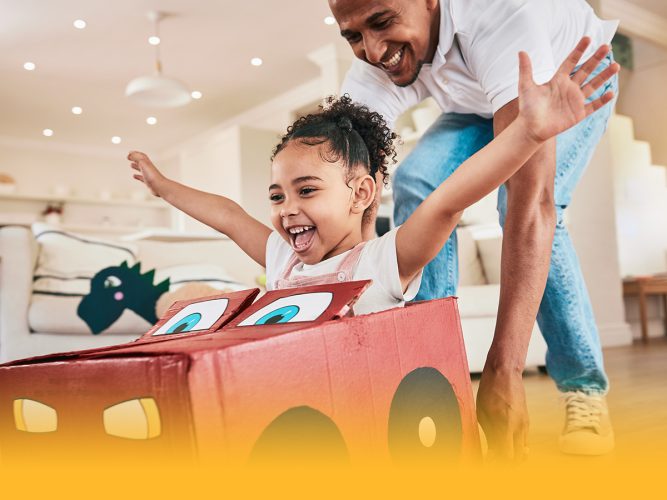
The Power of Following Children’s Lead
Joining children in their play offers so many opportunities to encourage, communicate, bond, spark and share joy, teach, show warmth and kindness, and help them thrive.
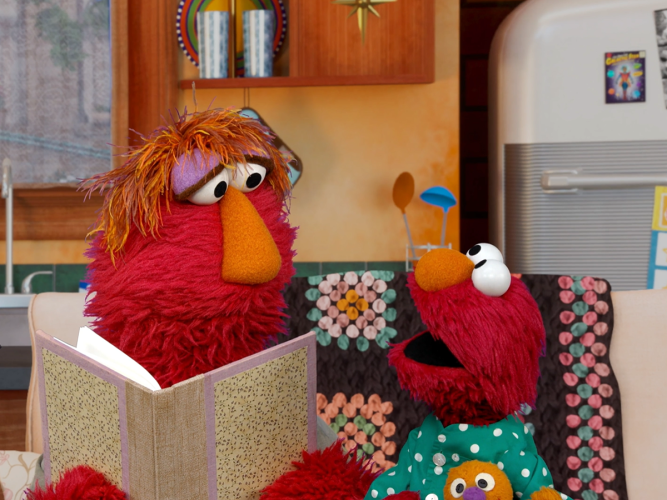
Go To Sleep, Elmo!
Handling a middle-of-the-night monster moment.
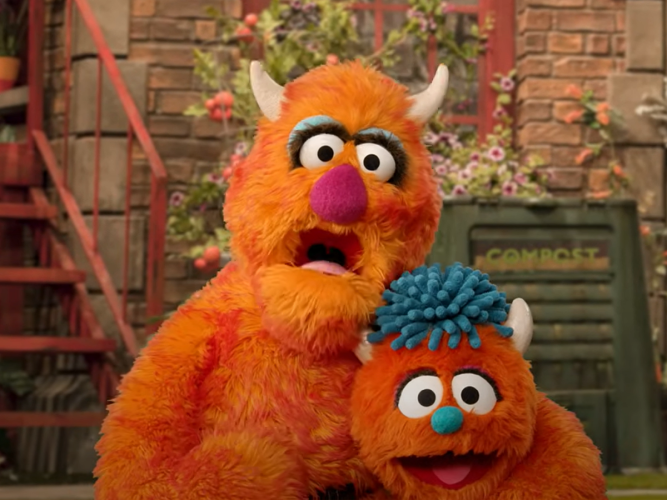
Monster Meltdown
Meltdowns happen… but they are somewhat predictable! As you try to handle them, curiosity and patience go a long way.
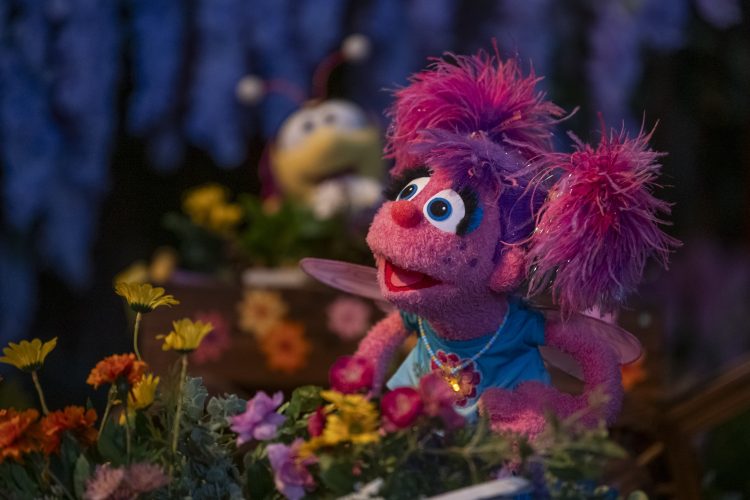
Watch and Play: Abby's Magical Beasties
Watch this episode and explore ways to extend the learning at home.
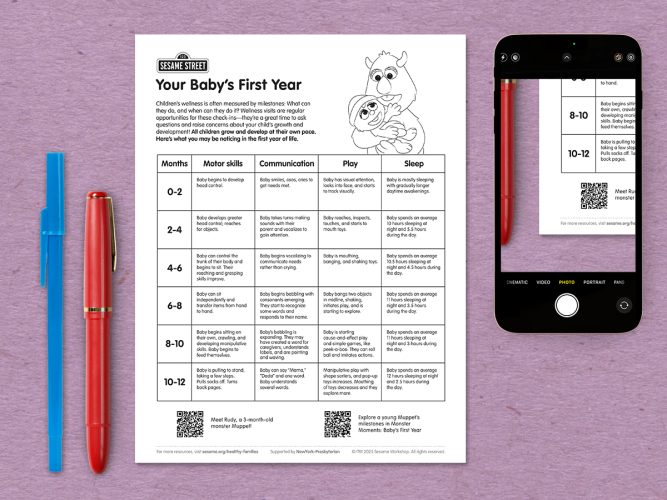
Milestones: Your Baby’s First Year
All children grow and develop at their own pace; use this chart to guide your expectations and observations so you can talk to your child’s pediatrician about questions or concerns.
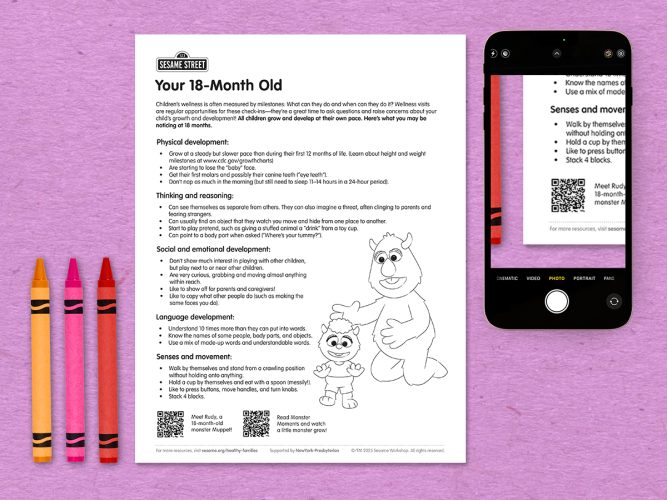
Milestones: Your 18-Month Old
All children grow and develop at their own pace; use this chart to guide your expectations and observations so you can talk to your child’s pediatrician about questions or concerns.
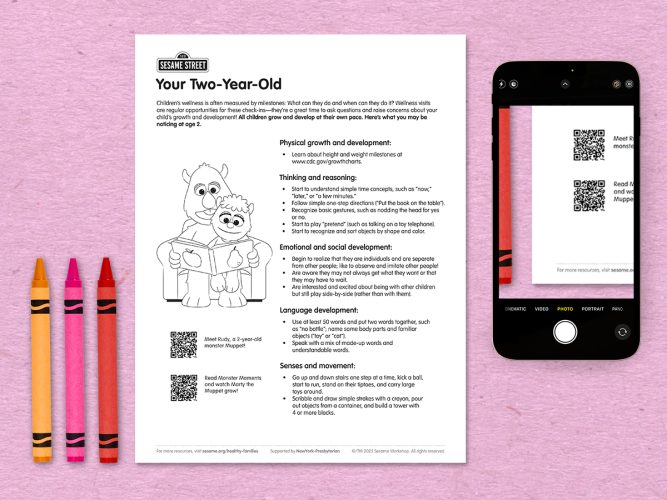
Milestones: Your Two-Year-Old
All children grow and develop at their own pace; use this chart to guide your expectations and observations so you can talk to your child’s pediatrician about questions or concerns.
